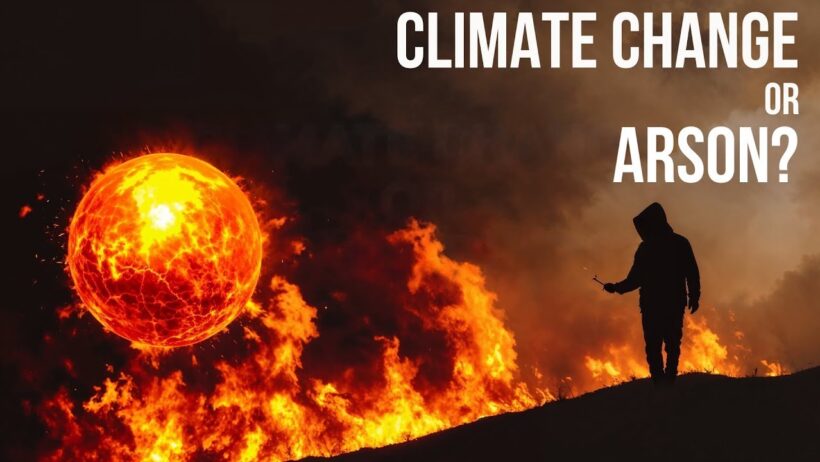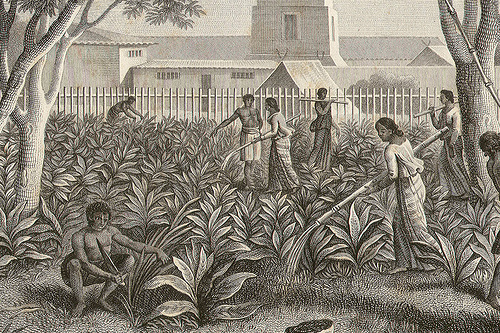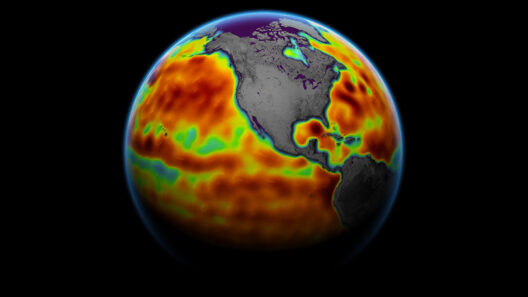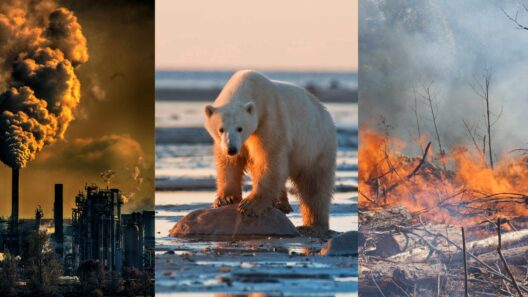As the global climate crisis intensifies, the dichotomy of extreme weather phenomena becomes increasingly apparent. While the overarching narrative often emphasizes soaring temperatures and unprecedented heatwaves, an equally important but frequently overlooked aspect of climate change is its contribution to unexpected cold snaps. This phenomenon prompts a critical examination of the intricate mechanisms at play within our atmosphere. What if the same forces driving global warming are also responsible for the frigid blasts that can disrupt communities and ecosystems alike?
The concept of global warming typically conjures images of parched landscapes and rising sea levels. However, the reality is considerably more complex. The interactions between various climatic systems often yield results that defy our expectations. Cold snaps, marked by plummeting temperatures and snowstorms in regions unaccustomed to such weather patterns, are not merely anomalies but are manifestations of a shifting climate dynamics. Understanding this relationship is essential for comprehending the full ramifications of our changing planet.
At the crux of this discussion lies the polar vortex, a large area of low pressure surrounding the Earth’s poles. Undernormal conditions, this vortex contains the cold polar air, allowing for milder temperatures in the mid-latitudes. However, when the polar vortex weakens, its circumference can destabilize, sending cold Arctic air spilling southward. Climate change may be altering the behavior of the polar vortex, largely due to changes in temperatures across the planet. Warmer Arctic conditions seem to correlate with a more erratic and twitchy polar vortex, thereby leading to an increased frequency of these intense cold events.
The relationship between global warming and cold snaps is largely attributed to the warming of the Arctic, often referred to as Arctic amplification. As sea ice diminishes and temperatures rise in the Arctic regions, this disrupts the atmospheric circulation patterns that govern weather at lower latitudes. A frigid winter day in January in the northeastern United States might be interpreted as an exception to the rule of a warming world, but it is becoming clearer that these occurrences may be indicative of a larger trend, driven by the changes taking place at the poles.
Additionally, the elusiveness of cold snaps amidst a warming climate raises questions about our expectations of seasonal weather. The fluctuating temperatures, characterized by rapid and drastic weather changes, are increasingly becoming the norm. Meteorological models, once reliable in demonstrating predictable climate patterns, are now at a precipice. This uncertainty can have dire implications for agriculture, infrastructure, and overall public safety. Extremes in temperature place additional stress on crops, water supplies, and energy resources, leading to potential economic fallout. Those in the agricultural sector, for example, may find themselves navigating uncharted waters, requiring adaptive strategies to mitigate risks associated with late frosts or sudden freezes.
It’s noteworthy that these sudden drops in temperature are not geographically limited; they affect temperate and tropical regions alike. In fact, the phenomenon of “snow in unexpected places” can lead to substantial difficulties for populations unaccustomed to handling winter weather. City infrastructures designed for temperate climates may falter when faced with unexpected snowfall or ice formation. Consequently, emergency services may be overwhelmed, and communities can find themselves in life-threatening situations when their local infrastructure lacks resilience in the face of icy conditions.
Moreover, the ecological ramifications of these cold snaps are profound. Many species are adapted to specific temperature ranges, and extreme fluctuations can disrupt migration patterns, breeding cycles, and feeding behaviors. For example, a sudden deep freeze can hinder the availability of critical food resources for fauna that rely on specific ecological cues. This, in turn, can set off a cascade of effects throughout the food web, damaging ecosystems and altering biodiversity.
As we ponder the increasingly erratic dance of climate, the imperative of understanding the nuances of these fluctuations comes sharply into focus. It becomes clear that the dialogue surrounding global warming must expand to account for both extremes of the temperature spectrum. Temperatures that plummet are reminiscent of the shivering dissonance that accompanies a warming world, and both phenomena stem from the same source: changes to our planet’s climate systems and their interconnectedness.
Yet these truths provoke a sense of urgency. As policymakers and communities grapple with the reality of climate change, it is vital to embed this knowledge into the fabric of our climate adaptation strategies. Child-focused education initiatives can serve as conduits for understanding the complexities of climate phenomena, encouraging future generations to embrace a more holistic perspective of environmental stewardship and ecological resilience.
In light of these revelations, we must reconsider our approach to climate discourse. A singular focus on rising temperatures diminishes the broader implications of climate change on our weather systems. By comprehensively addressing both warming and unseasonably cold events, we can better equip our societies to anticipate the vicissitudes of nature’s shifting whims. Only then can we hope to forge a path toward resilience in the face of the challenges that lie ahead.
As the adage goes, one must adapt or perish. In recognizing that global warming and cold snaps are inextricably linked, we hold the power to reshape how we respond to environmental changes. Engaging deeply with the myriad manifestations of climate change enables communities, industries, and nations alike to develop strategies that are informed by a profound understanding of the complex forces at play. With this knowledge, we can aspire not just to survive but to thrive in a rapidly changing world.







